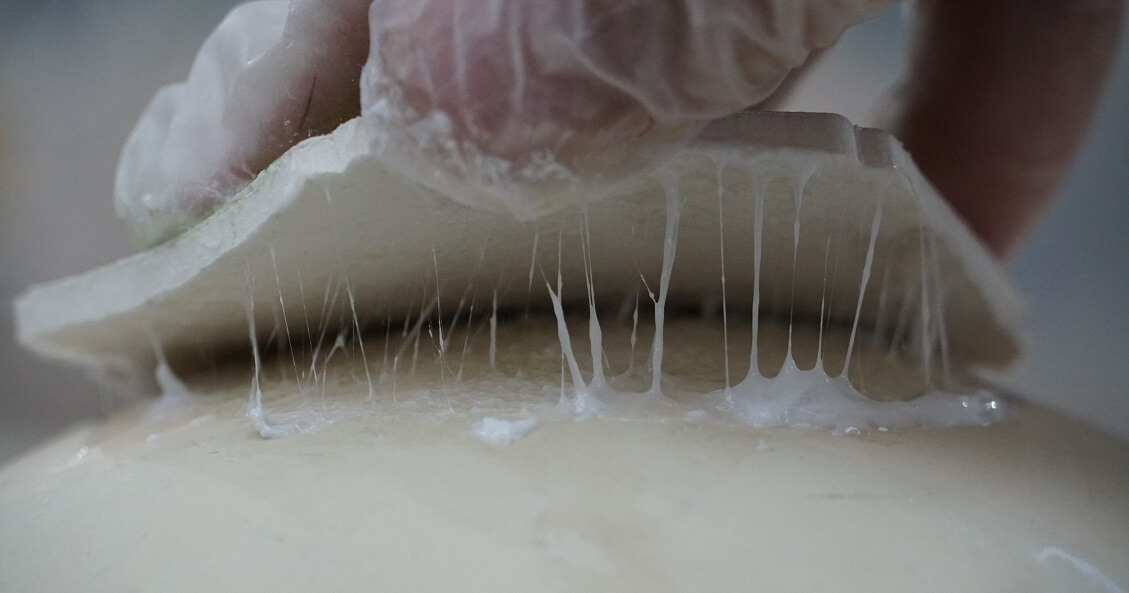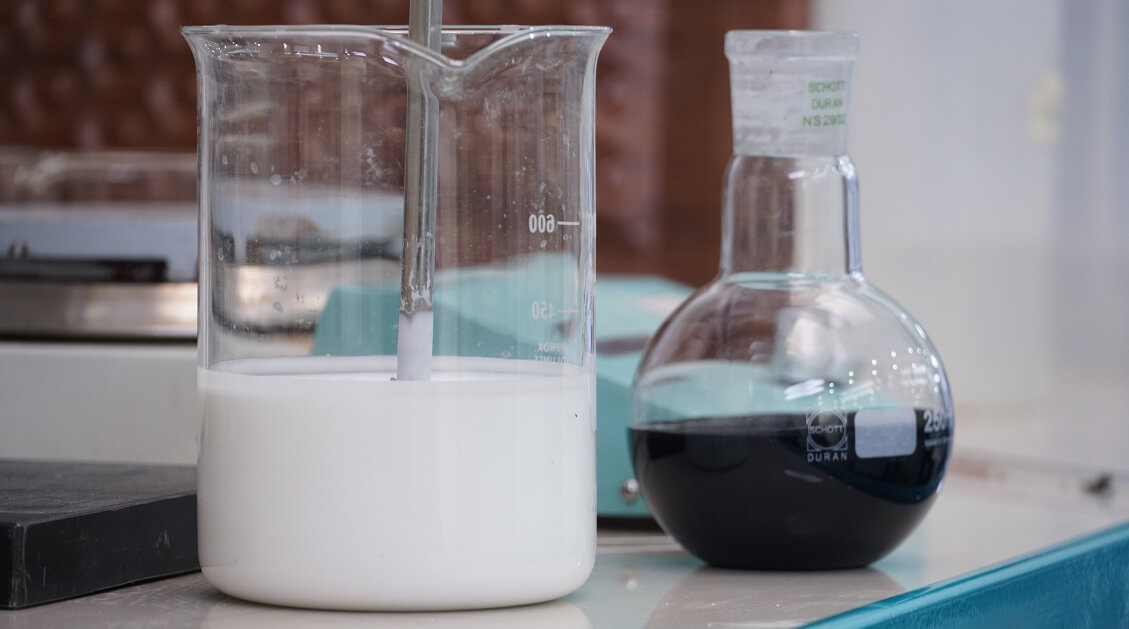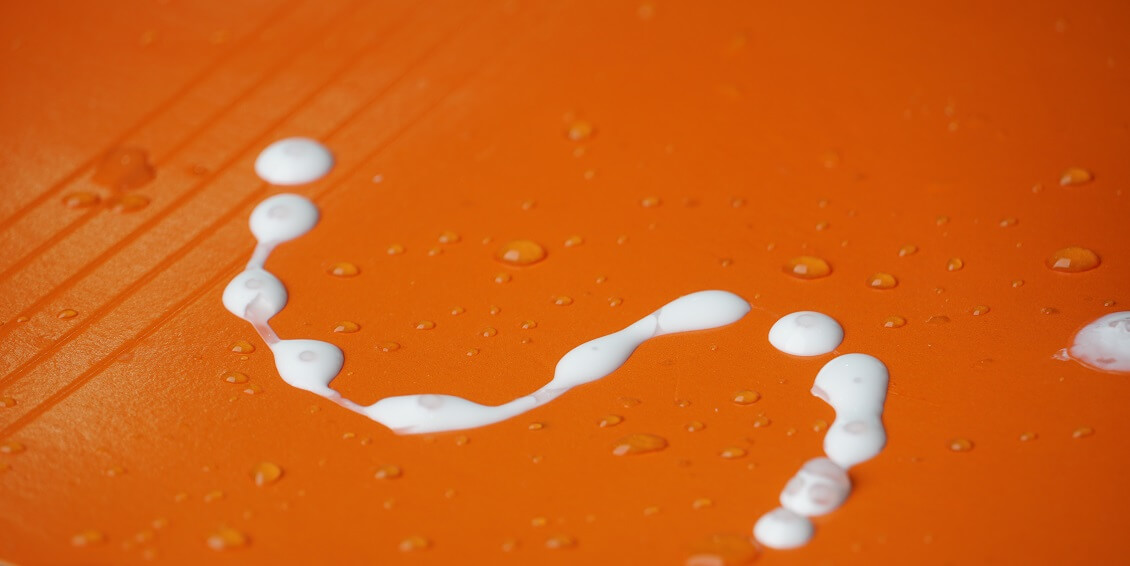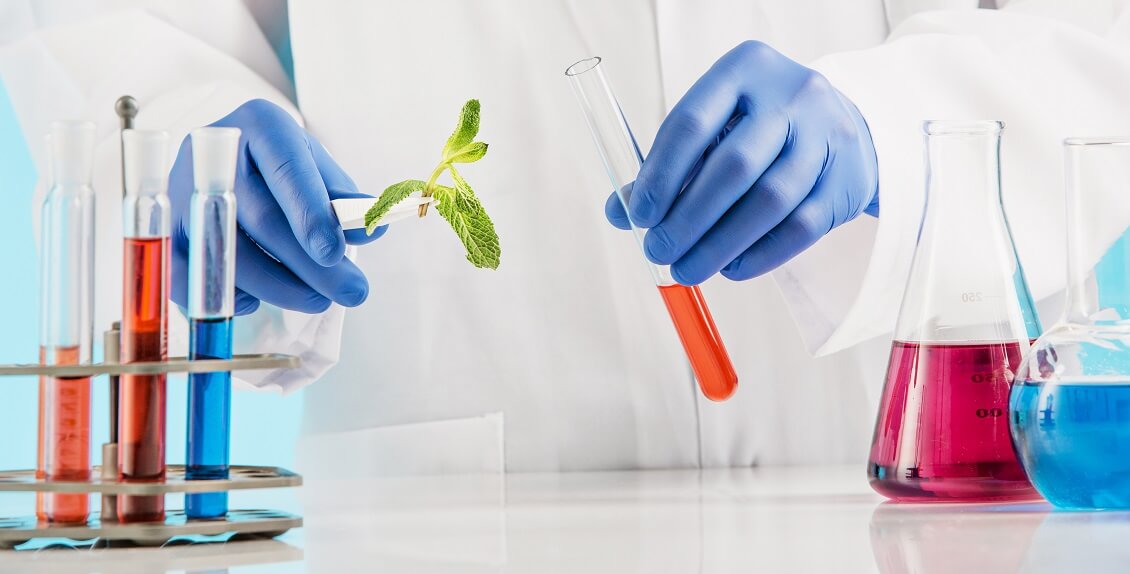Vacuum Adhesive Formulation
Vacuum adhesives are used for bonding various PVC sheets to MDF wood using a vacuum machine. Generally, vacuum adhesives fall into two categories: polyurethane-based adhesives and acrylic-based adhesives. Vacuum adhesives based on polyurethane dispersions are more commonly used due to their favorable properties, including suitable spray ability, thixotropic nature, optimal activation temperature, and appropriate drying speed.
The constituents of water-based vacuum adhesives include a combination of polymers, water, and additives. These adhesives are highly suitable for both porous and non-porous surfaces and encompass both natural and synthetic polymers.

Vacuum adhesives are classified based on their formulation as follows:
Two-Component Vacuum Adhesives: These adhesives require a hardener in addition to the adhesive. They need to be mixed together. Vacuum adhesives prepared using such formulations require high temperature and pressure for activation. One of the main drawbacks of this type of vacuum adhesive is the complexity of mixing the components.
Single-Component Vacuum Adhesives: The constituents of this type of vacuum adhesive do not require an additional hardener. The hardener is encapsulated within the adhesive formula, allowing for activation at significantly lower temperature and pressure.

Characteristics of a Suitable Formula for Vacuum Adhesive
The formulation of vacuum adhesives is prepared in such a way to ensure the following characteristics:
- Non-toxic and odorless
- Appropriate heat resistance
- Good drying speed
- Strong initial adhesion
- Suitable bond strength
- Chemical resistance
These characteristics can be modified depending on the constituents of the prepared vacuum adhesive
Additives for Vacuum Adhesives
Additives are among the constituents of vacuum adhesives used to enhance their performance. Here are some common additives:
- Surfactants and Emulsifiers: These are used to improve the stability of water-based vacuum adhesives.
- Anti-foaming agents: These prevent the formation of foam during adhesive preparation.
- Biocides: Biocides are added to prevent microbial growth in the adhesive.
- Pigments: Pigments may be included for color or other specific properties.
- Antistatic agents: These helps reduce static charges during application.
- Flame retardants: Flame retardant additives enhance fire resistance.
- Fillers: Fillers serve to reduce costs and improve adhesion properties.
- Crosslinking agents: These contribute to lateral bonding.
- Plasticizers: Plasticizers reduce material hardness and increase adhesion.

Acrylic-based vacuum adhesives are prepared by creating a homogeneous
emulsion of vinyl acetate, ethylene vinyl acetate, or synthetic acrylic resins in water. They strike a balance between the following factors:
- Bond Strength Over Time: The adhesive-to-surface bond strength increases during the curing process.
- Inherent Adhesion: Acrylic vacuum adhesives exhibit intrinsic adhesion properties.
- Speed of Adhesion Establishment: These adhesives quickly establish a bond with the surface.
An acrylic-based vacuum adhesive formula can be designed to have lateral bonds, improve resistance to water and weather, and prevent degradation by other solvents.
Water-Based Polyurethane Vacuum Adhesives
Water-based polyurethanes are a key component of vacuum membrane adhesives. In the following, we will introduce the constituents of water-based polyurethanes.
Polyurethanes can be produced using various methods, but the common root of all these methods is the reaction between polyol (an alcohol with two or more hydroxyl groups) and diisocyanate

Polyols are generally divided into two major groups: polyether polyols and polyester polyols. These compounds have two or more hydroxyl groups. When polyurethane adhesives are expected to be used, polyesters such as adipic acid and polycaprolactones are employed. The following table lists some of the polyols that may find application in vacuum membrane adhesive formulations, along with their summarized characteristics.
Polyol Category | Advantages | disadvantages |
polyether polyols based on propylene oxide and ethylene oxide. |
|
|
Aliphatic polyester polyol |
|
|
Aromatic polyester polyol | High Flash Point Modulus or Hardness |
|
Polyol polyether based on tetrahydrofuran | Hydrolytic Stability Modulus or Hardness |
|
| · Hydrolytic Stability
|
|
| · Hydrolytic Stability
|
|
| low temperature flexibility Lack of solubility |
thermal oxidation |
Isocyanates and non-isocyanates
Isocyanates are important materials for synthesizing polyurethanes. They are divided into difunctional or heterojunction and aromatic or aliphatic forms. Among the available types of isocyanates, methylene diphenyl diisocyanate (MDI), toluene diisocyanate (TDI), and aliphatic diisocyanatos are commonly used. The structures of some important isocyanates are shown in Table 3. Generally, MDI and TDI are more cost-effective and reactive compared to other diisocyanatos. Industrial grades of TDI and MDI are mixtures of various isomers of these materials and polymer materials. Modifications in isocyanates can be achieved through partial reactions with polyols or by combining certain substances to reduce fluctuations and toxicity of isocyanates. This leads to a decrease in freezing point, ease of handling and storage of these materials, and an increase in the quality of polymers synthesized from them.
Other groups of isocyanates include aliphatic and cycloaliphatic isocyanates, the most famous of which are IPDI, H12MDI, and HDI. They are used in cases like polyurethane (PU) coatings where color and clarity are very important. Aromatic isocyanates change color and darken when exposed to light.
Catalysts
Catalysts typically used in the production of polyurethane vacuum adhesives are categorized into two main groups: 1- Metal complexes 2- Amine compounds.
Amine catalysts are usually tertiary amines such as dimethyl cyclohexylamine (DMCHA), dimethylethanolamine (DMEA), and triethylenediamine (TEDA). The selection of tertiary amine catalysts is based on their ability to direct urea and urethane reactions or the terminal reactions of isocyanates with water and other substances.
Complex metal compounds such as bismuth, lead, zinc, tin, and mercury are also used as catalysts in the synthesis of polyurethanes. For the production of coatings and adhesives (especially vacuum adhesives), carboxylates of Group 14 elements are very effective because they selectively catalyze the reaction of polyols with isocyanates. However, due to their high toxicity, zinc and bismuth carboxylates have replaced them. In various processes, carboxylates, mercaptides, and tin oxides are also used. Particularly in formulations containing water, tin mercaptides are usually used instead of their carboxylates because they are unfavorably hydrolyzed.
In general, the reactivity of catalysts varies according to their nature.
Chain Extenders and Cross-Linkers
Other compounds that typically play a significant role in the morphology of polyurethanes are chain extenders (with functionality f=2) and cross-linkers (with functionality f≥3). These compounds are usually low molecular weight hydroxyl and amine transition compounds. They effectively improve the morphology of adhesives, particularly vacuum adhesives. The elastomeric properties of these compounds arise from the interphase of copolymers of hard and soft segments. Thus, the hard urethane segment acts as a cross-linker for the amorphous polyester (polyether) soft segment. Phase separation occurs due to the incompatibility and immiscibility of the soft (non-polar, low melting) and hard (high melting) segments, even though both phases are amorphous. Therefore, crystallization does not affect phase separation.
In general, the hard segments are composed of isocyanates and chain extenders and are stationary and rigid, while the soft segments are made up of polyols (with high molecular weight) and can move freely.
The appropriate selection of chain extenders can also affect the thermal resistance, chemical resistance, and flexibility properties of polyurethanes. Some of the most common chain extenders used in the synthesis of polyurethanes include 1,4-butanediol, cyclohexane dimethanol, ethylene glycol, and hexanediol.
Water-Based Polyurethane
So far, we have introduced the main constituents of polyurethanes; as mentioned, water-based polyurethanes are used as the primary component in the vacuum adhesive formula. The main point in using polymers in aqueous environments is that specific polar functional groups are capable of dispersing PU in water; carboxylic acid groups and sulfonic acid groups are among the most famous.
Water-based polyurethanes are divided into two categories: 1- Polymers stabilized with external emulsifiers 2- Achieving stability by placing hydrophilic centers in the polymer; such hydrophilic centers may be one of the following types:
Non-ionic groups: For example, polyethylene oxide chains
Cationic groups: For example, alkylated or protonated tertiary amines
Anionic groups: For example, carboxylate or sulfonate groups
The use of an internal emulsifier as one of the constituents of polyurethane vacuum adhesive leads to ease in the dispersion of polyurethane in water.
The table below lists various ionic centers used in the formula of polyurethane vacuum adhesive.
- Dimethylolpropanoic Acid (DMPA)
- Dimethylolbutanoic Acid (DMBA)
- Sodium- 4,4- Dihydroxy -1-butanesulfonate
- 2,4-Dihydroxybenzoic acid
One of the important steps in the synthesis of water-based polyurethanes is neutralization, in which ionic centers are neutralized, leading to the creation of a hydrophilic nature in the polyurethane and facilitating its dispersion in water
Some of the neutralizing agents used in the vacuum adhesive formula include:
Triethylamine (TEA)
- Lithium hydroxide
- Trimethylamine
- Potassium hydroxide
- Tripropylamine
In conclusion, as mentioned, in recent years, the use of vacuum adhesives based on polyurethane has expanded. Features such as ease of use, suitable adhesion, good drying speed, adhesive strength, appropriate activation temperature and time, thermal resistance, and biocompatibility are reasons for the global market’s inclination towards this type of vacuum adhesives. Nevertheless, research continues in improving properties and obtaining an optimal formula for vacuum adhesives.


